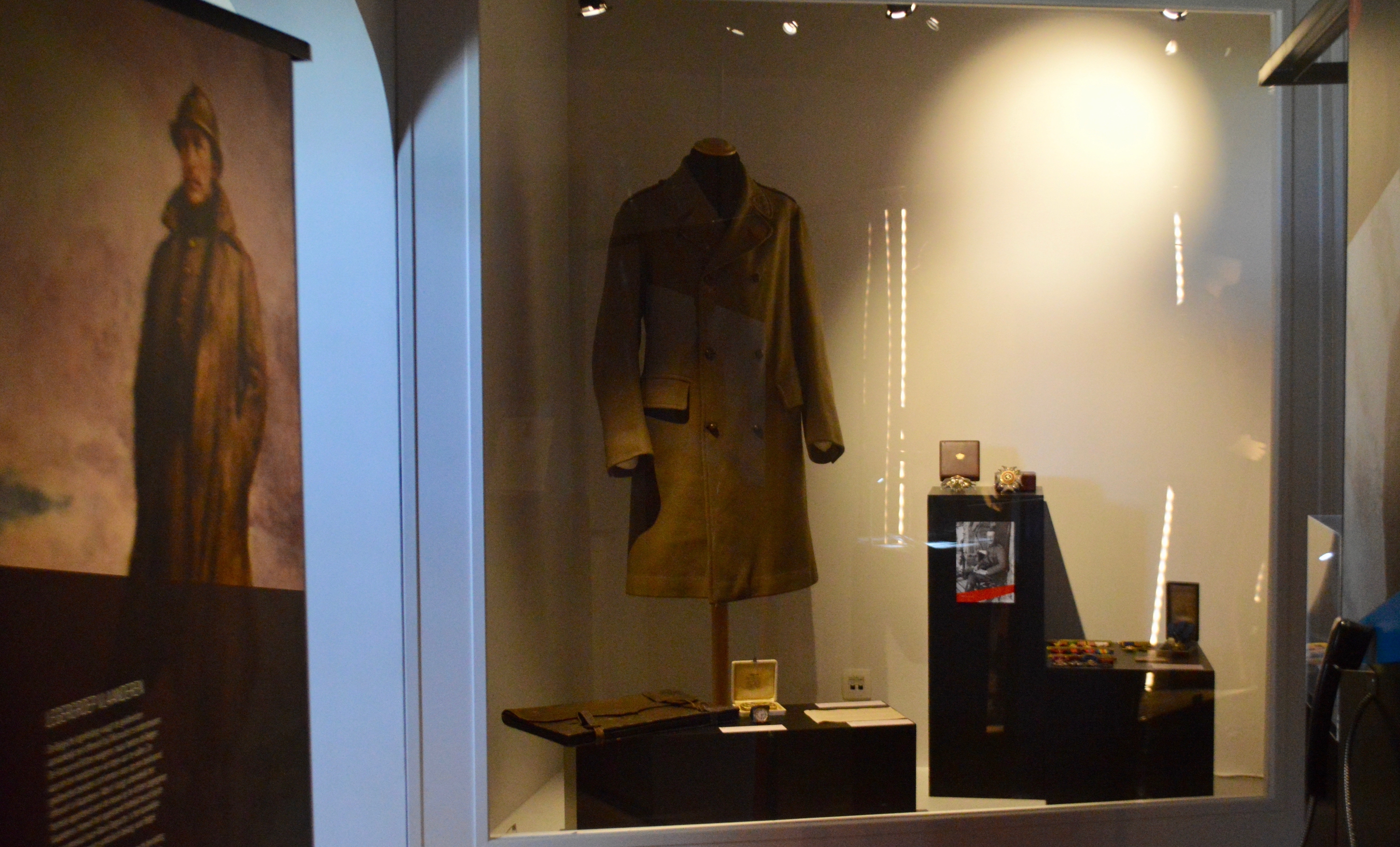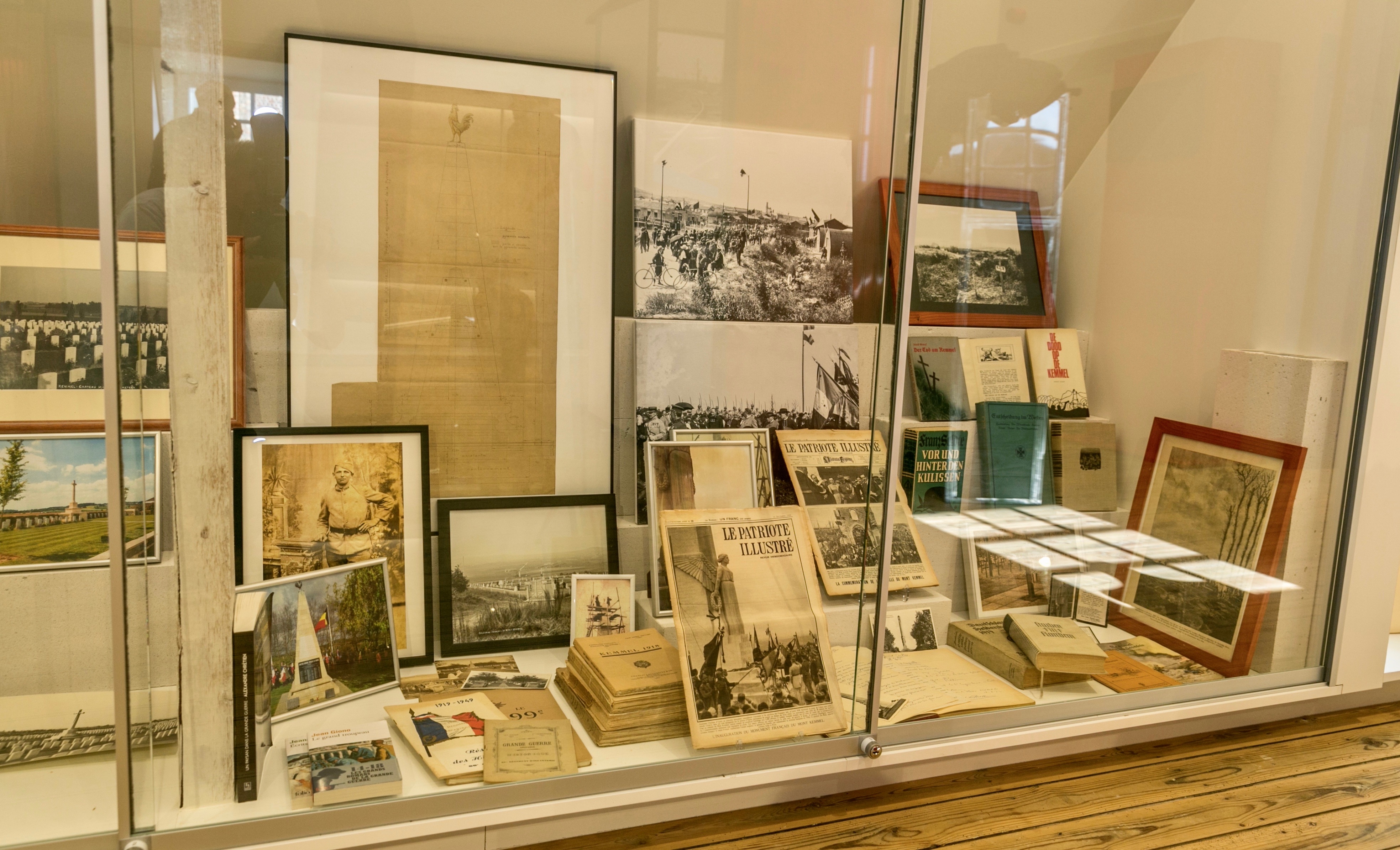Three exhibitions now under way in Zonnebeke, Heuvelland and Waregem highlight different aspects of the last year of the First World War in Flanders.
In 1918, this region of western Belgium continued to be the scene of major operations – first by the Germans, who again threatened Ypres during the Flanders phase of their Spring Offensive in April, and then by the Allies who finally broke out of the Ypres Salient in late September as part of the Hundred Days, the offensives ending the war.
1918 also saw the arrival of American forces in Flanders for the first time.

In these connected exhibitions, Villa Zonnedaele at Zonnebeke provides a general introduction to the last year of WW1 in Flanders. It includes personal objects of King Albert I of the Belgians (above), who led his country’s resistance to German occupation throughout the Great War. In 1918, he was put in command of the Allied armies in Flanders for the final push for victory.
The battles for Mount Kemmel are highlighted at Heuvelland Visitor Centre.
Used by the British for observation southwest of of Ypres, the heights of the Kemmelberg were stormed by the German Army in April 1918. French troops, brought in to reinforce the British, suffered heavy casualties. By the end of August, Kemmel had been recaptured with US support.

French exhibits at Heuvelland Visitor Centre
‘The Yanks are Coming’ – the third of the exhibitions, at the HIPPO. WAR visitor centre in Waregem – focusses on the American presence in greater detail, in particular the advances towards the River Scheldt in the very last days of World War I.
The centenary exhibitions run until 15 November 2018 (at Heuvelland, until 15 December). Admission is free. For more details, see 1918 – The Final Offensive.
Source: Memorial Museum Passchendaele 1917; Visitflanders; Wikipedia
Images courtesy of MMP 1917, Heuvelland Visitor Centre, Hippo-WAR, Waregem
Posted by: CN Editorial Team
